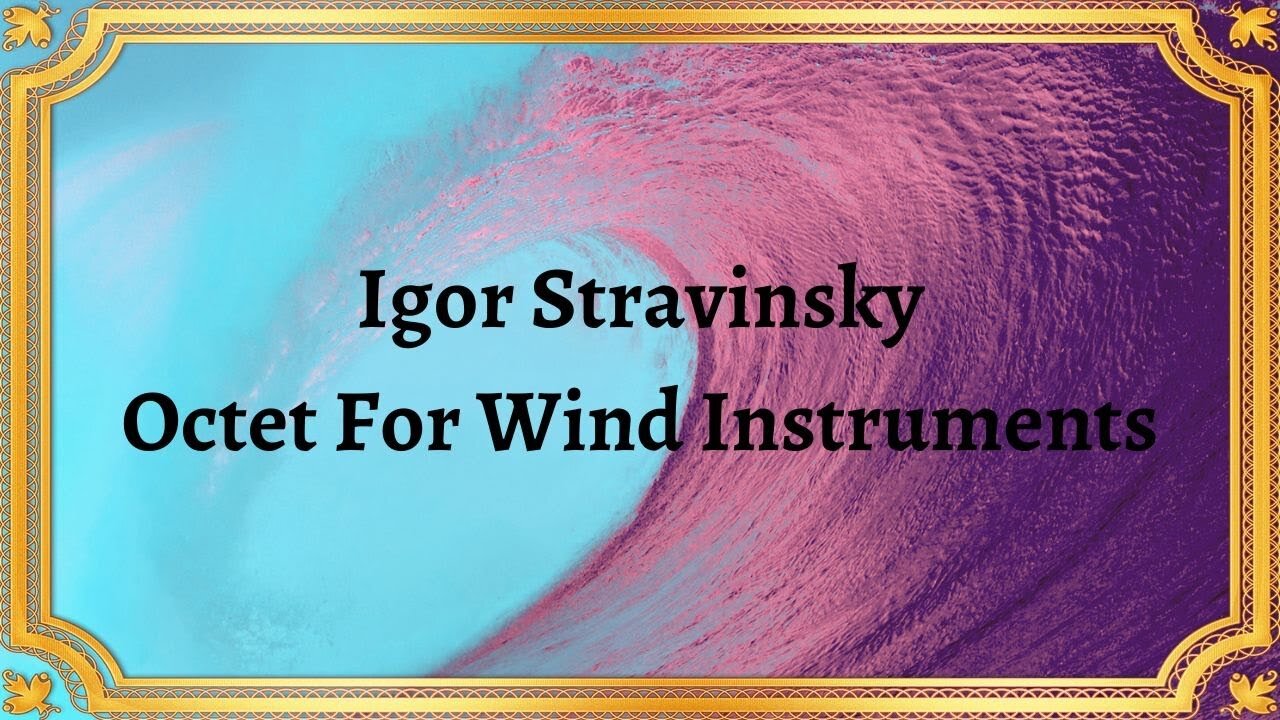Premium Only Content

Igor Stravinsky Octet For Wind Instruments
#classicalmusic #IgorStravinsky #OctetForWindInstruments #neo-classicalera #Baroque #jazz #musicalinstruments #musicalcomposition #musicalgenres #musicappreciation #musicians
Publication date 1950
Leonard Bernstein; Boston Symphony Orchestra
Igor Stravinsky's Octet for Wind Instruments is a ground-breaking musical composition that captures the essence of his musical genius. It is one of his most renowned works of the neo-classical era, presenting a unique blend of traditional and modern musical styles. The piece is a stunning example of Stravinsky's ability to bend traditional forms into something new and innovative.
Composed in 1923, Octet for Wind Instruments was commissioned by the conductor Ernest Ansermet just two years after Stravinsky's successful ballet "The Rite of Spring." At the time of its composition, Stravinsky was exploring the possibilities of neo-classicism, blending the traditions of the past with contemporary compositional techniques and modern instrumentation.
The piece takes inspiration from Baroque compositions and traditional octets, featuring a complex interplay of different wind instruments, including flute, clarinet, oboe, bassoon, horn, trumpet, trombone, and bass trombone. The composition is structured in three distinct movements, each of which takes a unique and creative approach to exploring this unique instrumentation.
The first movement, titled "Sinfonia," begins with a rich, layered dialogue between the wind instruments that combines intricate melodies with rich harmonies. Despite its neo-classical structure, the dynamic and unpredictable nature of the piece connects it to the rhythms and tonalities of modern jazz.
The second movement, "Tema con variazioni," provides a stark contrast to the first, opening with a simple, delicate statement that transforms through a series of modulations and variations. The piece's rich harmonies and unpredictable rhythms are carried through into this movement, which explores the resonant qualities of the wind instruments.
The third and final movement, "Finale," is a rousing and energetic conclusion to the piece. Stravinsky masterfully weaves the different wind instruments together, culminating in a thrilling and joyous finale that showcases the brilliant interplay of the octet.
Octet for Wind Instruments stood out from the works of other composers of the time due to its unusual instrumentation and innovative approach to composition. Stravinsky had taken an established classical form and reimagined it for the modern world, cementing his position as one of the most important composers of the 20th century.
In conclusion, Igor Stravinsky’s Octet for Wind Instruments is a masterpiece that showcases his exceptional talent in blending diverse musical styles to create something truly compelling.
You have the opportunity to support the channel https://destream.net/live/RadSiarAl/donate
-
 25:59
25:59
Classical music_Music Inspiration
5 days agoEdvard Grieg Peer Gynt Suites 1 & 2
711 -
 17:41
17:41
MetatronGaming
2 days agoI should NOT Have taken the elevator...
34 -
 LIVE
LIVE
Lofi Girl
3 years agolofi hip hop radio 📚 - beats to relax/study to
3,165 watching -
 1:20:23
1:20:23
Man in America
11 hours agoHow Epstein Blackmail & FBI Cover-Ups Are Fracturing MAGA w/ Ivan Raiklin
178K25 -
 2:13:49
2:13:49
Inverted World Live
7 hours agoSolar Storms Ground 1000 Planes | Ep. 151
106K6 -
 2:54:08
2:54:08
TimcastIRL
7 hours agoJ6 Pipe Bomb Suspect ARRESTED, Worked With BLM, Aided Illegal Immigrants | Timcast IRL
249K122 -
 3:59:02
3:59:02
Alex Zedra
5 hours agoLIVE! Bo7 Warzone
33.4K1 -
 4:37:35
4:37:35
Drew Hernandez
1 day agoCANDACE OWENS / TPUSA STALEMATE & DC PIPE BOMBER CAPTURED?!
57.1K35 -
 12:31
12:31
Robbi On The Record
8 hours ago $5.02 earnedWhy Nothing Feels Real Anymore | The Science, Culture, and Spiritual War Behind the Fog
41.8K10 -
 18:42
18:42
Navy Media
8 hours agoHouthis ATTACK the Wrong U.S. Fighter Jet – Then THIS Happened…
44.2K41